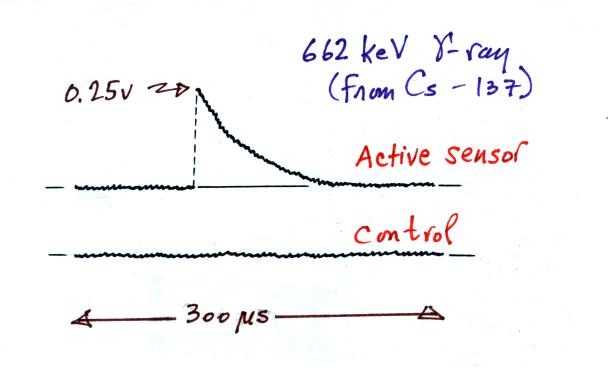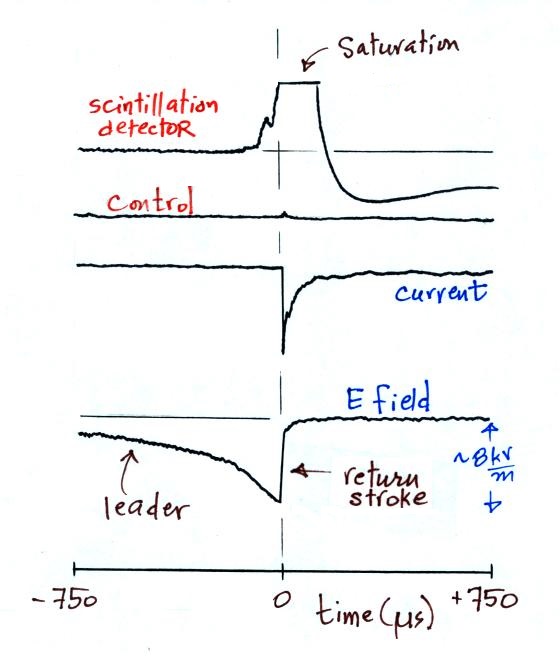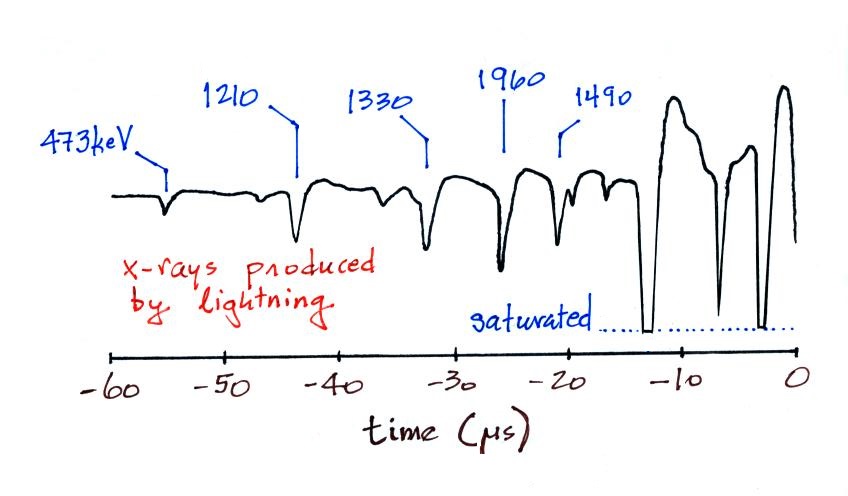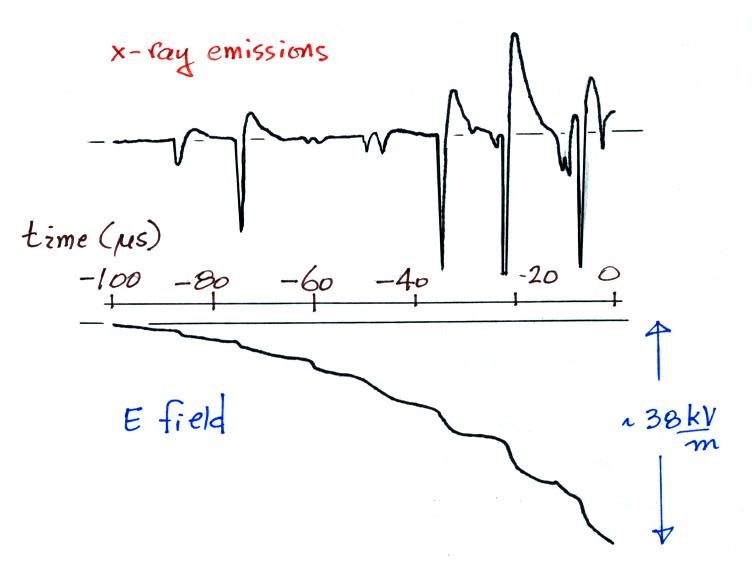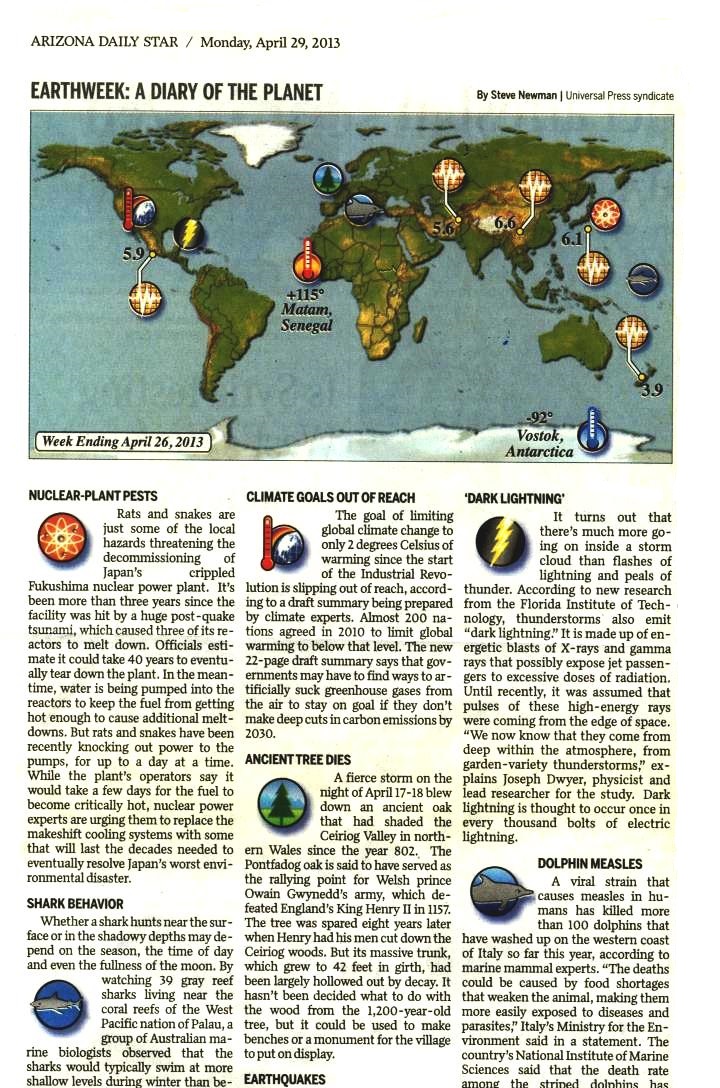Energies for most of the x-rays that were
detected are shown in the publication, some of the values are
included in the sketch above (in keV). Note
how the amplitudes of the x-rays in this and the next figure
increase as the leader (a dart leader in this case) nears the
ground.
Dwyer
et al. (2005) has measured X-ray emissions coming from
the stepped leader process in natural cloud to ground
discharges. The last 11 steps of the stepped leader are
shown in the sketch below (the start of the return stroke is
at time = 0).
The lightning struck about 50 m from the electric field
derivative antenna (the E field signal above is an integration
of the measured dE/dt signal) and about 260 m from the x-ray
detector.
It seems clear that the x-rays are produced during the
stepping process. Because of the similarity
between x-rays produced by dart leaders in triggered lightning
and stepped leaders in natural lightning Dwyer et al. (2005)
suggests that the production mechanisms are similar and that
dart leaders also step, but with a frequency that isn't
resolved on optical or field records.
Implications
Emissions from dart leaders in triggered lightning and
stepped leaders in natural lightning are similar. This
suggests some similarities in the discharge process (dart
leaders may actually step
Observations may provide some clues about leader propagation
processes.
The standard "relativistic runaway electron avalanche model"
might have some trouble trying to explain the lightning
generated X-ray emissions.
And finally something that appeared in the local newspaper
yesterday.


